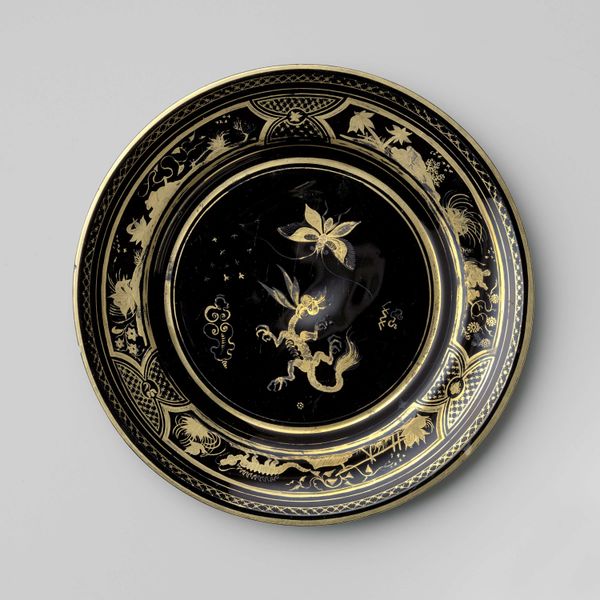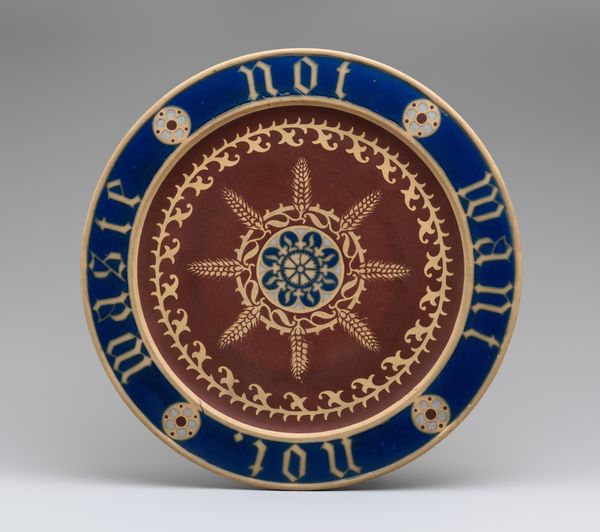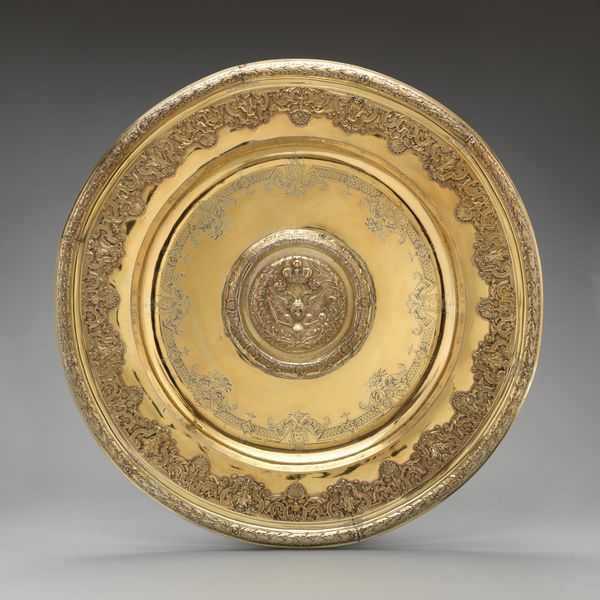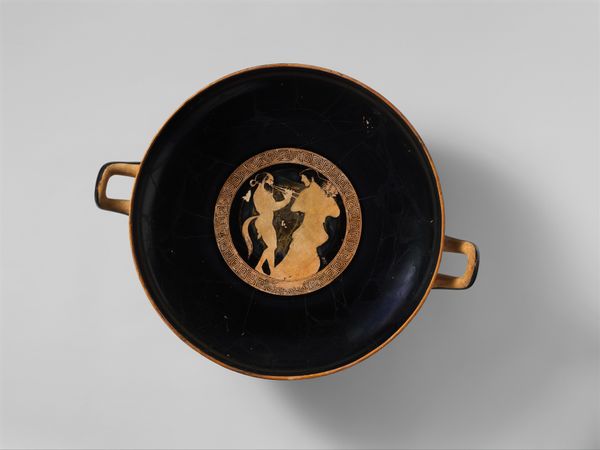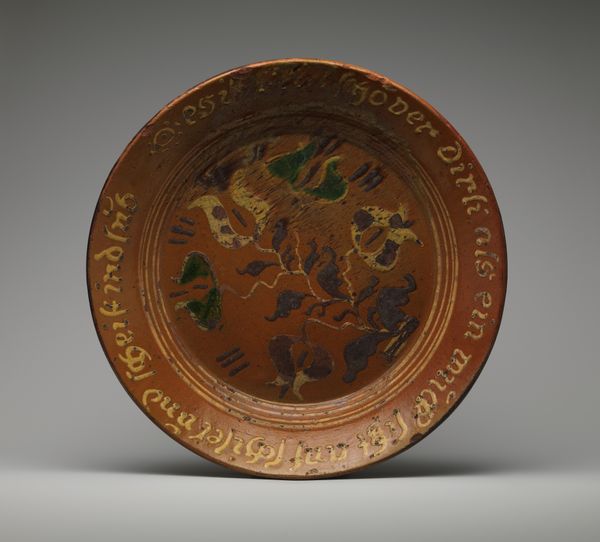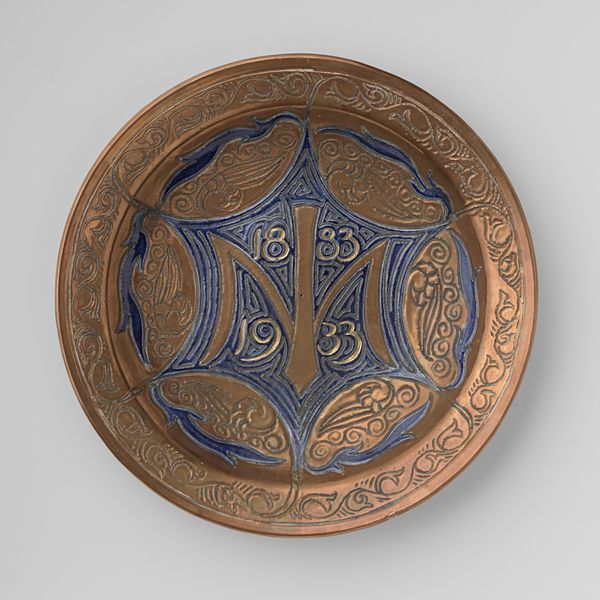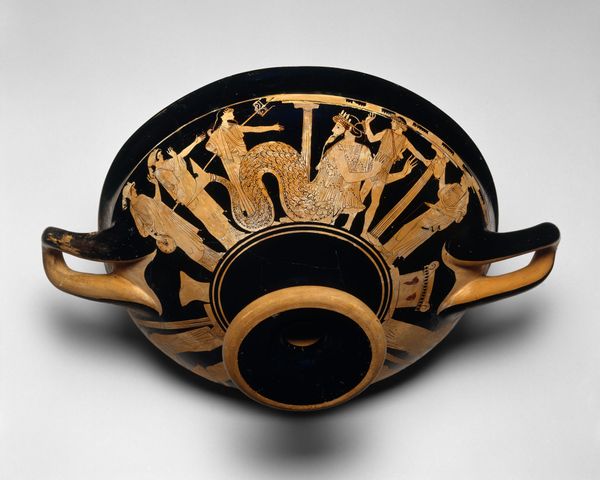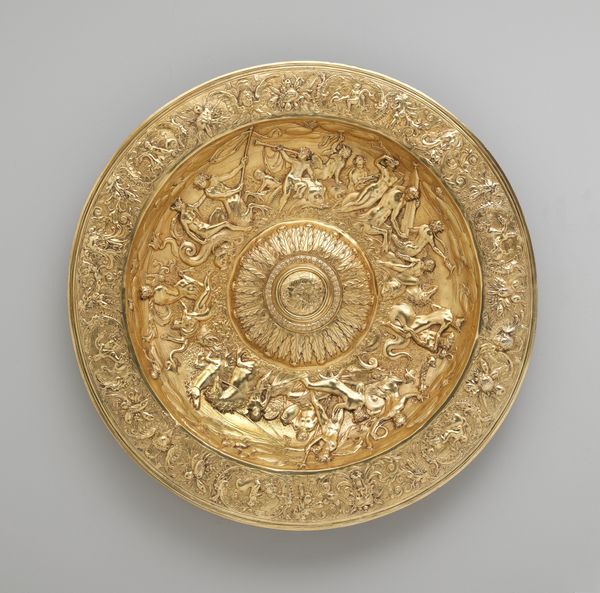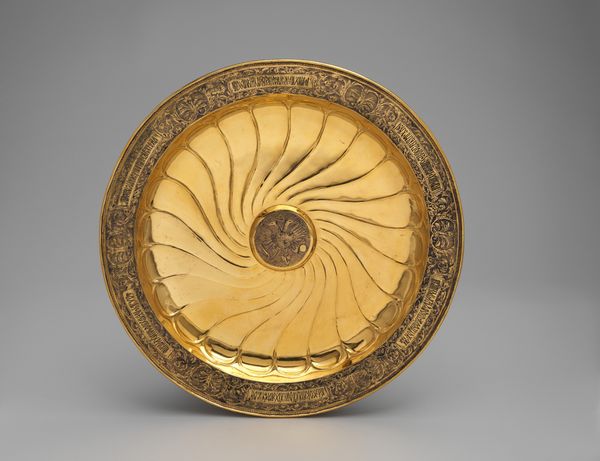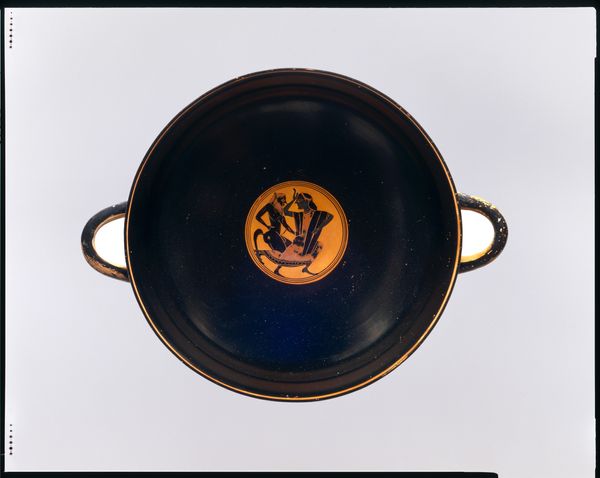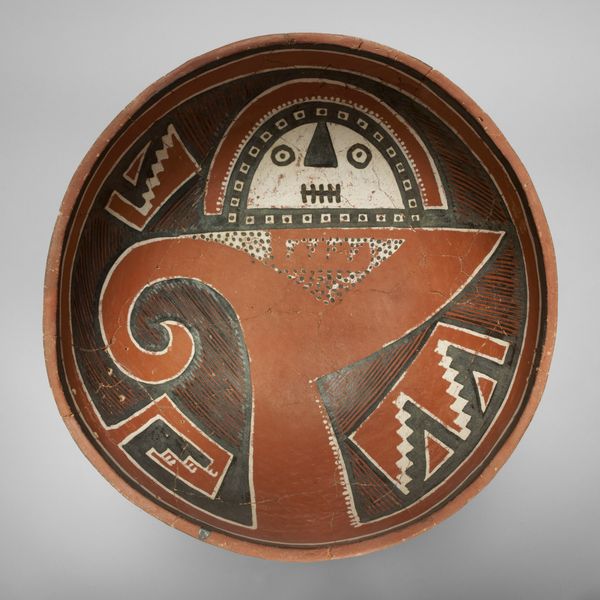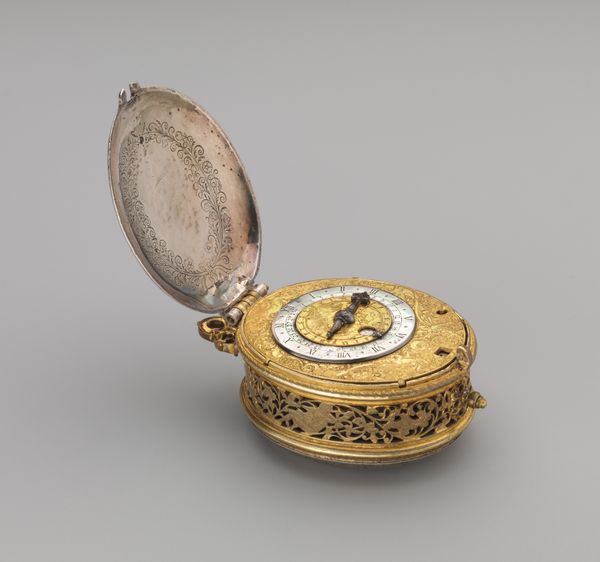
drawing, ceramic
#
portrait
#
drawing
#
greek-and-roman-art
#
ceramic
#
figuration
#
ancient-mediterranean
#
miniature
Copyright: Public domain
Curator: Look at the miniature detail on this drinking cup, called a kylix. Crafted around 550 BC, this terracotta piece resides at the Metropolitan Museum of Art, and its careful drawings exemplify the period’s artistic expression. Editor: I'm immediately struck by the graphic power of the central image. That winged figure seems to possess a weight far beyond its miniature size. The dark figure centered against the light ground in the center is very striking, I'd love to hear more about that figure in the center. Curator: The figure in the center appears to be a Siren—a hybrid creature, part woman and part bird. Her image is particularly poignant when considered through the lens of mythology and its frequent association with themes of seduction, dangerous knowledge, and the silencing of female voices. Her positioning at the bottom of the cup may reveal the inherent duality of Greek patriarchal society in simultaneously fearing and desiring the female figure. Editor: Absolutely. The Siren has so many interesting, conflicting connotations. Its symbolic register covers a spectrum of ideas, from danger and temptation to music and allure, not to mention mourning. You can see her echoed across centuries—think of medieval gargoyles or even, in a more domestic guise, Victorian fireplace tiles. Is this Siren an omen or a decorative enhancement? Curator: Well, to approach it from another angle, the siren may be meant to act as a protector. The kylix, like much Greek pottery, wasn’t purely functional; its decoration had significance. By looking closely, we might find clues as to whether the figure represented a form of safeguarding from misfortune for its owner, in line with the Ancient Greek’s tradition of seeing signs in the world. Editor: Interesting! It reminds me how symbols evolve and persist, shapeshifting their meanings across time. The circular nature of the cup enhances that cyclical, timeless sensation. In a sense, we’re still drinking from the same cup, symbolically speaking, millennia later, reinterpreting the motifs based on our historical position. Curator: A fascinating notion. The piece's location now in the Metropolitan Museum of Art, invites us to view the vessel not as a relic, but as a link in an unbroken chain of visual communication across the centuries, each adding another layer of interpretation. Editor: Precisely. Every encounter adds a new residue to its symbolic field, inviting endless reinvention.
Comments
No comments
Be the first to comment and join the conversation on the ultimate creative platform.
